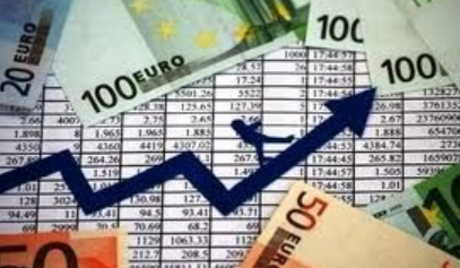Hunger, poverty and corruption

In 25 years, the Philippines suffered massive declines on three fronts: 1) in the output and growth rate of agriculture, once the economy’s mainstay and biggest employer; 2) in economic growth, down to just 5.55 percent average in 2023 and 2024 from 7.6 percent in 2022 and 3) in the quality of governance. Corruption is rampant, massive and breathtaking in impunity.
Combining these three, the result is the Philippines falling from being the richest nation in the 10-nation ASEAN and the second richest in Asia (after Japan) to an economic laggard, left behind by Singapore, Malaysia, Thailand and Indonesia, in economic growth rate and per capita income. When the Philippines became Asia’s first republic in 1898, Thailand (1932), Indonesia (1945), Malaysia (1957), and Singapore (1965) were not even nation states.
Singapore, when it began as a nation in 1965, did not even have water, toilets nor electricity.
The Philippines was an economic powerhouse. It established Asia’s oldest waterworks system, the Nawasa or MWSS, in 1878, 18 years before Rizal was killed at the Luneta. It founded Asia’s first electric and railway company, in 1903. That is why Meralco means Manila Electric Railroad and Light Company. The Philippines also founded Southeast Asia’s first bank, Bank of PI, in 1851. The country had plenty money then, funneled into the Manila Stock Exchange, Asia’s oldest stock market, founded in 1927.
Agriculture’s output as a percentage of GDP (gross domestic product) has fallen from 27.6 percent in 1974 when Marcos I achieved a rice surplus with his Green Revolution to 13.9 percent by 2000 and to eight percent in 2024, the lowest ever.
A decline from 13.9 percent to eight percent of GDP means lost agricultural production worth P4.1 trillion or P34,000 per person – money that makes the difference between having food and having none. Compare that to the P200 million each senator or the P100 million each congressman pockets per year, as pork.
With the population growing by 1.8 percent per year, agriculture should grow by at least 1.8 percent per year. Yet, per capita in 30 years, agriculture growth has averaged just 0.2 percent (one-fifth of one percent) per year, meaning, those who are already hungry (31 million today) will never get to eat the basic food they need because the economy keeps adding two million mouths to feed each year.
That our legislators can haul in P100 million to P200 million per year indicates the economy has enormous resources, cash that is stolen systematically.
Indeed, the savings rate is 24.4 percent. Based on a P30-trillion economy, 24.4 percent is P7.32 trillion. So even of if our politicians steal P3 trillion of a P6-trillion budget, there is still money to spare – P7.32 trillion less P3 trillion is P4.32 trillion – exactly the amount the government failed to invest in agriculture in past years to enable every Filipino to eat three meals a day.
Even today, the Philippines has plenty of money. Twelve million overseas Filipinos remit $37 billion (P2.1 trillion) a year. In 2024, our business processing outsourcing (BPO) earned another $38 billion (P2.2 trillion). Combined, the $75 billion is almost ten times the $7.7-billion foreign direct investments registered last year. So it’s not true that foreign capital is not coming in. We get plenty of dollars, $75 billion a year, growing by at least five percent per year. In ASEAN, the $75-billion capital inflow is bigger than each of the FDIs of all ASEAN members, except Singapore’s $141 billion in 2023.
If we have plenty of savings and plenty of dollar income, how come 31 million Filipinos don’t have any food to eat at all and only 35 of every 100 college-age kids are in college? Aren’t food and education a matter of money? Pera pera lang yan.
Answer: Corruption and incompetence. Corruption is stealing. Incompetence is not doing what you are supposed to do, a failure of public officials to deliver basic services – food to eat, public transport, electricity that is cheap, quality education, from elementary to college, and reliable and cheap connectivity or internet or WiFi signal.
Among 180 countries in 2023, the Philippines ranked 115th in corruption perception or index, same as Indonesia, both with a score of 34.
The highest score in Transparency International (TI)’s Corruption Index is 100; the lowest is zero. The higher the score, the more honest the country.
The top four in honest governance are 1) Denmark, 90; 2) Finland 87; 3) New Zealand, 85 and 4) Norway, 85.
Singapore has Asia’s most honest government, No. 5, with a score of 83.
TI says a score of 50 means a country is corrupt, “they have serious corruption problems.” The average corruption score in the world is 43. The Philippine score is 34; it is more corrupt than the rest of the world.
In 2019, the world beat its extreme poverty goal, with only 8.4 percent of the population living below the poverty line of $2.15 a day. The Philippine extreme poverty ratio in 2019 – 20.8 precent, 2.5 times the world average.
The world’s extreme poverty ratio in 2024 was 8.5 percent or 700 million. The Philippine extreme poverty ratio in 2024: 15.5 percent, 17.54 million Filipinos.
“Global poverty is one of the most pressing problems that the world faces today. The poorest are often undernourished, without access to basic services such as electricity and safe drinking water; they have less access to education, and suffer from much poorer health,” says the World Bank.
As early as 2019, the world had succeeded in reducing extreme poverty, to 8.5 percent. The Philippines has not. Why? Corruption.
Says Wikipedia: “Some of the many causes of poverty are bad governance, corruption, a political system dominated by political dynasties, vulnerability to environmental disasters and the lack of available jobs.”


Nessun commento:
Posta un commento